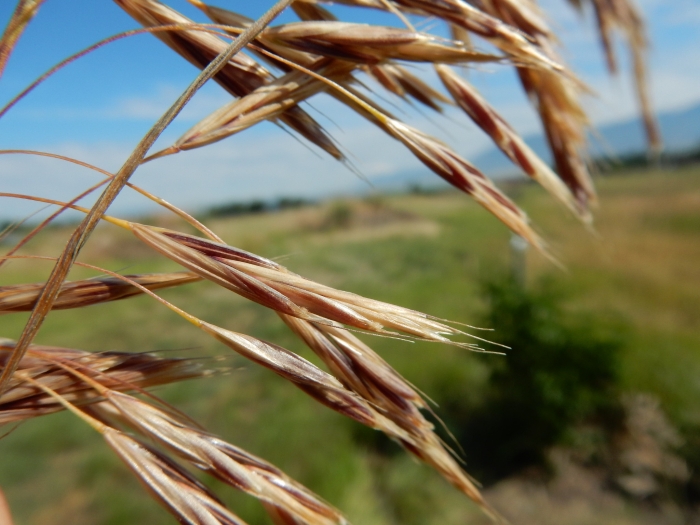Meadow Bromegrass
(Bromus biebersteinii)
Meadow Bromegrass (Bromus biebersteinii)
/
/

Matt Lavin
CC BY-SA 2.0
Image By:
Matt Lavin
Recorded By:
Copyright:
CC BY-SA 2.0
Copyright Notice:
Photo by: Matt Lavin | License Type: CC BY-SA 2.0 | License URL: https://creativecommons.org/licenses/by-sa/2.0/ | Uploader: Matt Lavin | Publisher: Flickr |


















Estimated Native Range
Summary
Bromus biebersteinii, commonly known as Meadow Bromegrass, is a deciduous perennial grass native to temperate regions of West Asia and the Caucasus. It typically grows to a height of 1-4 feet (0.3-1.2 meters) with a narrow spread of about 0.1 feet (0.03 meters). Meadow Bromegrass forms dense tufts of foliage and produces a profusion of seed heads that are valued for their forage quality. The plant is characterized by its upright growth habit and soft, green leaves that turn golden brown in autumn, providing seasonal interest in the landscape.
Meadow Bromegrass is highly regarded for its use as a forage grass due to its high nutritional value and productivity. It is also used for soil stabilization and as a cover crop. This grass thrives in full sun and is adaptable to a wide range of soil moisture conditions, from well-drained to poorly drained soils. It is drought-tolerant once established and can handle high amounts of water, making it versatile for various cultivation scenarios. The cultivars ’Arsenal’, ’Cache’, ’Fleet’, ’MacBeth’, ’Montana’, ’Paddock’, and ’Regar’ have been developed to enhance certain desirable traits such as yield and hardiness. While Meadow Bromegrass is generally low-maintenance, it can become invasive if not managed properly, especially in regions outside its native range.CC BY-SA 4.0
Meadow Bromegrass is highly regarded for its use as a forage grass due to its high nutritional value and productivity. It is also used for soil stabilization and as a cover crop. This grass thrives in full sun and is adaptable to a wide range of soil moisture conditions, from well-drained to poorly drained soils. It is drought-tolerant once established and can handle high amounts of water, making it versatile for various cultivation scenarios. The cultivars ’Arsenal’, ’Cache’, ’Fleet’, ’MacBeth’, ’Montana’, ’Paddock’, and ’Regar’ have been developed to enhance certain desirable traits such as yield and hardiness. While Meadow Bromegrass is generally low-maintenance, it can become invasive if not managed properly, especially in regions outside its native range.CC BY-SA 4.0
Plant Description
- Plant Type: Grass
- Height: 2-4 feet
- Width: 2-3 feet
- Growth Rate: Rapid
- Flower Color: N/A
- Flowering Season: Spring
- Leaf Retention: Deciduous
Growth Requirements
- Sun: Full Sun
- Water: Medium, High
- Drainage: Medium
Common Uses
Drought Tolerant, Erosion Control, Low Maintenance
Natural Habitat
Temperate regions of West Asia and the Caucasus
Other Names
Common Names: Meadow Brome, Smooth Brome, Bieberstein Brome
Scientific Names: , Bromus biebersteinii, Bromus albidus, Bromopsis biebersteinii, Bromopsis beckeri, Bromopsis biebersteinii subsp. beckeri, Bromopsis biebersteinii subsp. kazbecki, Bromopsis biebersteinii var. beckeri, Bromopsis biebersteinii var. kazbecki, Bromopsis kazbecki
GBIF Accepted Name: Bromus biebersteinii Roem. & Schult.